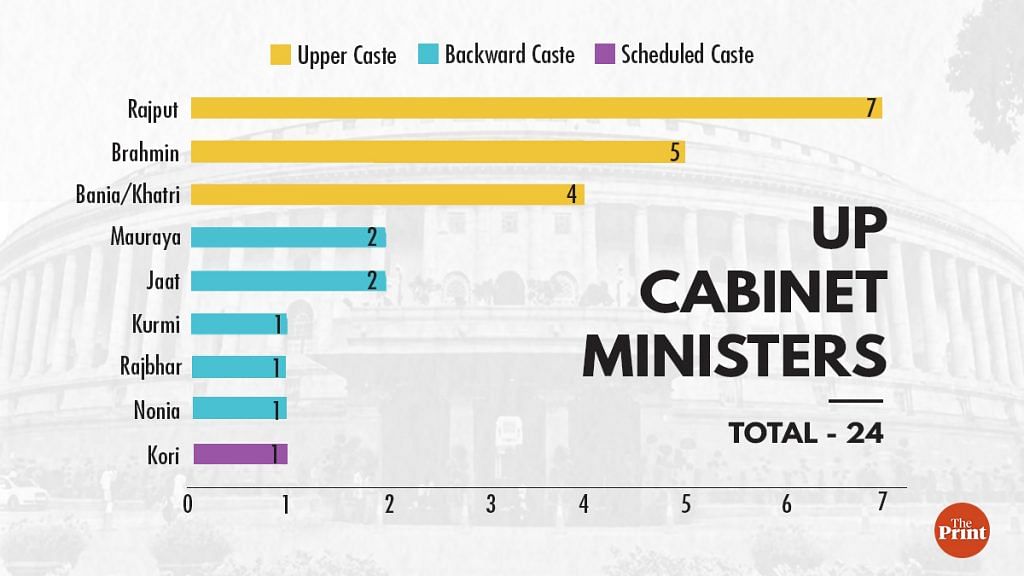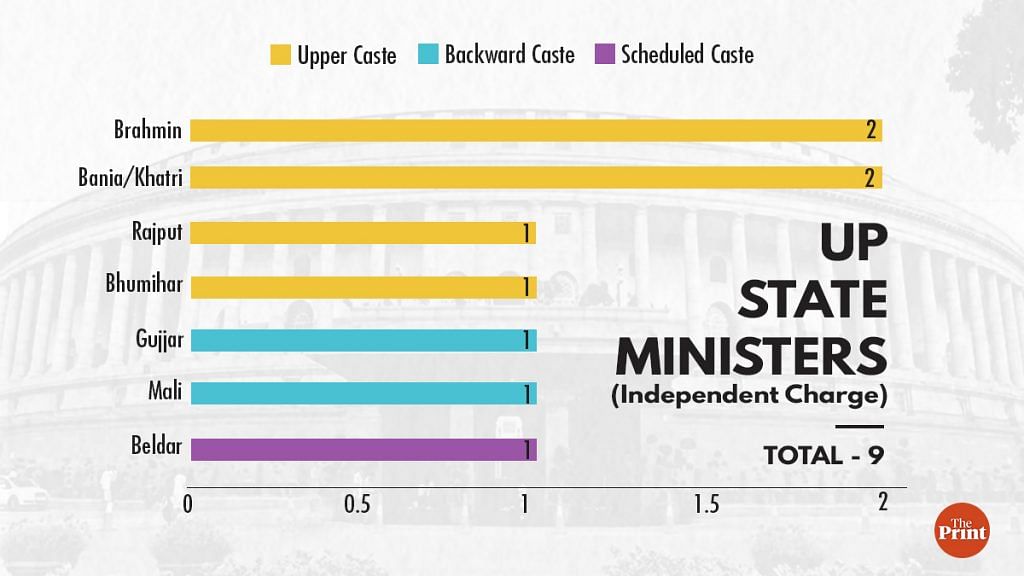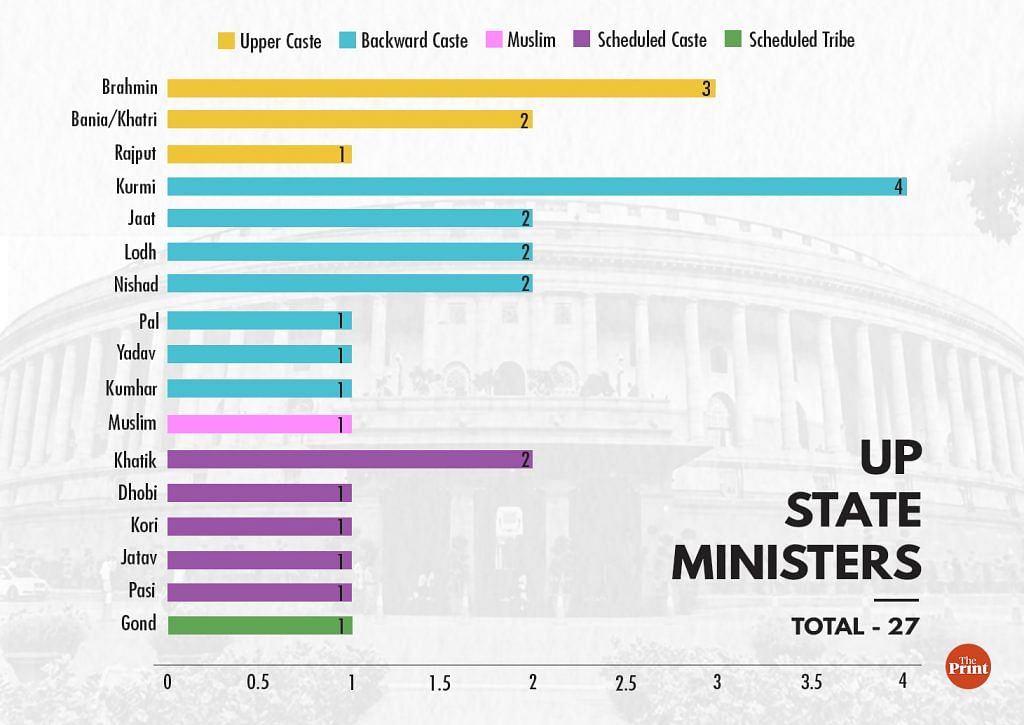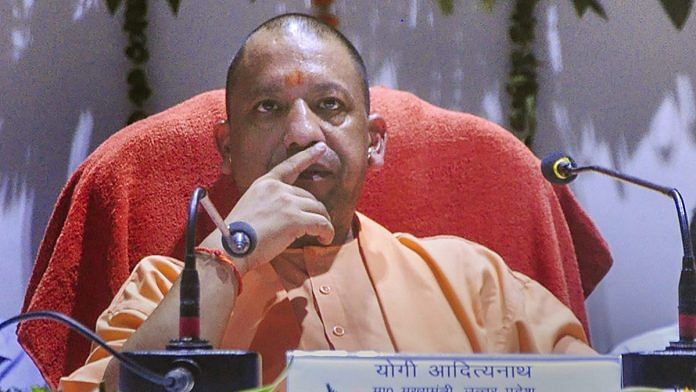Ending month-long speculations, Yogi Adityanath has finally expanded his council of ministers. He has inducted seven new ministers — Jitin Prasada, Sangeeta Bind, Chhatrapal Gangwar, Dinesh Khatik, Sanjeev Kumar alias Sanjay Gond, Dharamveer Prajapati and Palatu Ram in his council of ministers.
The recent appointment of Charanjit Singh Channi, a Dalit, as the chief minister of Punjab by the principal opposition party, Congress, was seen as a pushing factor for the BJP to go for such a decision in order to show its goodwill towards the Dalit community. There had already been discussions in the UP BJP circle that one Dalit leader could be inducted into the government as deputy chief minister in this expansion. Three leaders’ names — Laxman Acharya, Krishna Raj and Bebi Rani Maurya — were in the discussion.
Recently, Yogi Adityanath’s series of tweets, highlighting the social significance of this community has caught public attention. In a preachy tone, Adityanath wrote, “आप सभी याद रखना, अनुसूचित जाति समाज का ‘नींव‘ है। नींव दिखती नहीं है, किंतु भवन उसी पर खड़ा होता है। भवन की मजबूती उसी पर निर्भर करती है [Don’t forget that Scheduled Castes are the foundation of society. Though the foundation remains invisible, the building stands on it, and its strength depends on it]”.
His tweets and activities appear to be appeasing the backward communities in his state where assembly elections are due early next year. However, so far as Dalits are concerned, despite his claims of running an inclusive government with the commitment of ‘sabka sath, sabka vikas’, Yogi has run the most exclusionary government in Uttar Pradesh in the last two decades, no matter the recent expansion.
This has been leading to the growth of discontent among the Dalit community. I have been on my fieldwork in Uttar Pradesh from April to August 2021 and that gave me a chance to interact with local political leaders, social activists and the people to assess the ground reality about the discontent. I use insights from my fieldwork along with empirical data to show the underlying cause of worry.
Also read: What Jat and Dalit Sikhs say about Congress’ Punjab move and next CM: Survey
Anxiety among Dalits
There is growing anxiety among the Dalit in general and Chamars/Jatavs in particular, in Uttar Pradesh due to their exclusion from the positions of power. Local Dalit leaders cutting across party lines informed me that their community had not been given a fair share in political power and public administration. I was told that the top echelons of the state bureaucracy, which is the face of the government have negligible representation from the Dalit community. And that this was not the case in previous governments.
To understand the claims of the Dalit community leaders empirically, I tabulated the caste composition of Yogi’s council of ministers prior to this expansion and found them to be true to a great extent.
Caste composition of UP cabinet
The council of ministers comprises cabinet ministers, State ministers (independent charge) and State ministers. It is the cabinet ministers who make major policy decisions. The State ministers (independent charge) are invited to the meetings of the cabinet, only when a matter pertaining to their ministry is involved.
Besides Jitin Prasada, all other new ministers have been given portfolio of state ministers. An overview of the social composition of these newly inducted ministers reveal that out of seven newly inducted ministers, one is Brahmin, three Backward Castes (OBCs), two Scheduled Castes and one from Scheduled Tribes.
The caste composition of cabinet ministers in the Adityanath government shown in Table 1 reveals that his cabinet is dominated by the upper castes in general and Rajputs in particular. Out of the 24 cabinet ministers, only one, Ramapati Shastri, is an SC. A seven–time MLA, Shastri was first elected in 1974 on a Jana Sangh ticket. He was a cabinet minister in the Kalyan Singh government in 1991 and 1997. In the current term, he has remained shadowed.

Of the nine State ministers (independent charge) shown in Table 2, again, only one belongs to the SC community. This list is also dominated by ministers from upper castes. There is just one minister from the Gujjar community, which has a significant presence in western Uttar Pradesh and Bundelkhand.

Table 3 shows that out of the 27 State ministers in UP, only six belong to the Scheduled Castes. This list also has the only Muslim minister in the Adityanath cabinet. A total of 13 State ministers are from backward castes. The sociological analysis of this list reveals that a major chunk of these ministers coming from the backward and scheduled caste communities have been given the rank of a State minister—those who do not have any direct say in decision making.

Also read: Yogi ministry expansion an exercise in social engineering, Jitin Prasada gets cabinet rank
Marginalisation of Chamars/Jatavs
Dalits have been inadequately represented in the UP cabinet, and within the Dalits, Chamars/Jatavs have been marginalised to a great extent. In the entire council of ministers, only one State minister, Dr G. S. Dharmesh, is a Jatav. Similar is the case with Pasis. Prime Minister Narendra Modi has recently inducted a minister from the Pasi caste in his council named Kaushal Kishor to placate the latter.
It is interesting to note that Chamars/Jatavs, who constitute 54.23 per cent of the total SC population in Uttar Pradesh have been given only one minister, and even that with a State rank. The issue is under serious discussion among the local leaders and social activists of this community. In close room discussions, they said their caste has not faced such attempts of marginalisation during previous governments.
They also highlighted that not only the number of ministers but MPs and MLAs from their caste have also declined. They claim that within all caste groups, their caste (Chamars) is the single largest caste group in Uttar Pradesh, and also has significant presence in the rest of India. They have the capacity to affect electoral outcomes in other states as well. Despite this, the BJP has taken the risk of excluding them from political power.
The BJP has not only failed to elevate any Dalit leader to the post of the CM but, as data shows, its claims of OBC and Dalit outreach also appear empty. The party has not delivered in terms of power-sharing, both in politics and administration. Though the party has taken a call to expand the UP cabinet by including ministers from marginalised communities, this exercise is too late. Such inclusion has remained nominal since state ministers are hardly involved in the decision making of the government.
Read Arvind Kumar’s article on the reasons behind Yogi Adityanath picking seven new cabinet ministers.
The author would like to clarify that caste names have been used for academic purposes, not with any malafide intentions.
Arvind Kumar (@arvind_kumar__), PhD Scholar, Department of Politics & International Relations, Royal Holloway, University of London. Views are personal.
(Edited by Anurag Chaubey)






